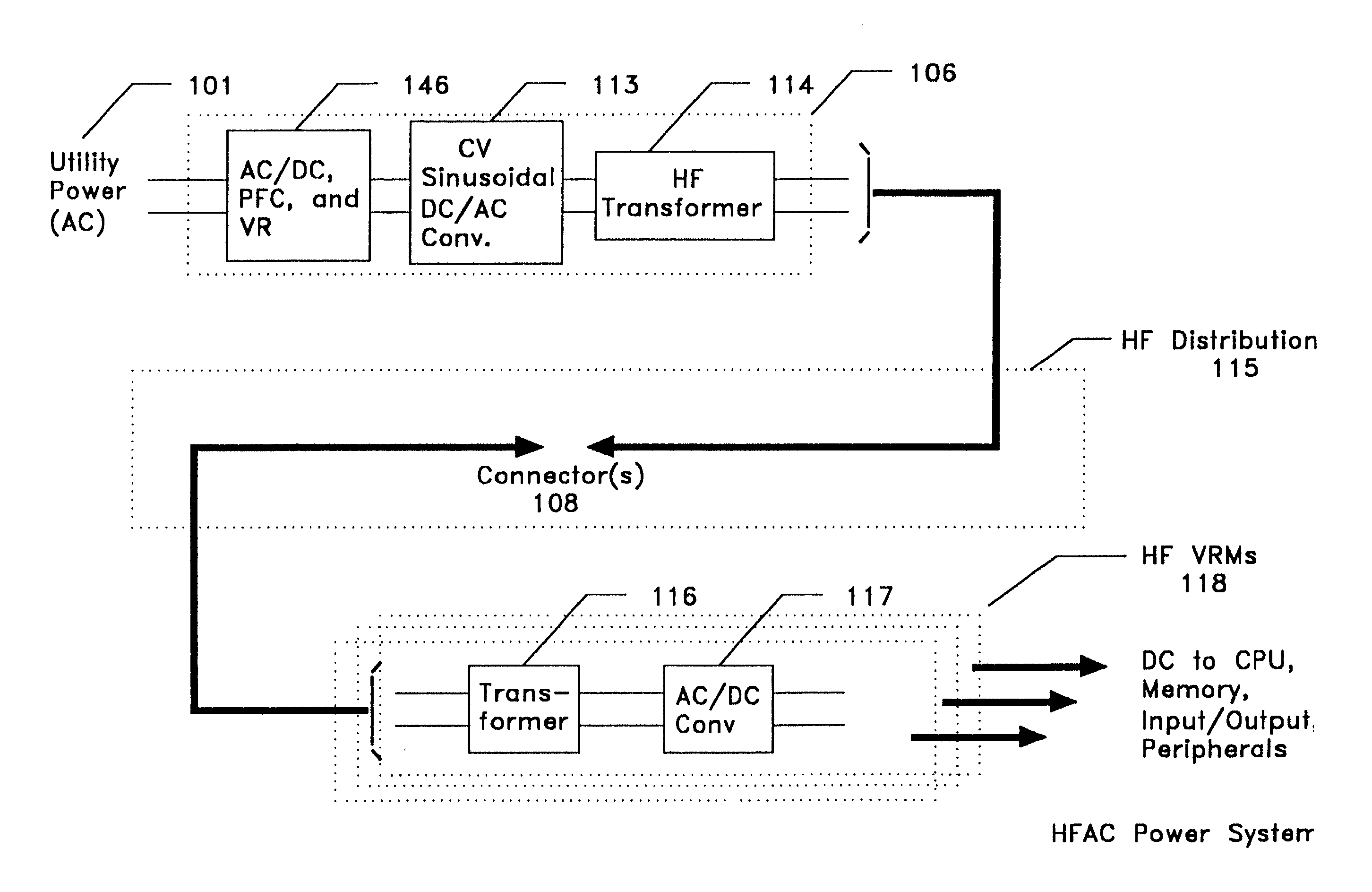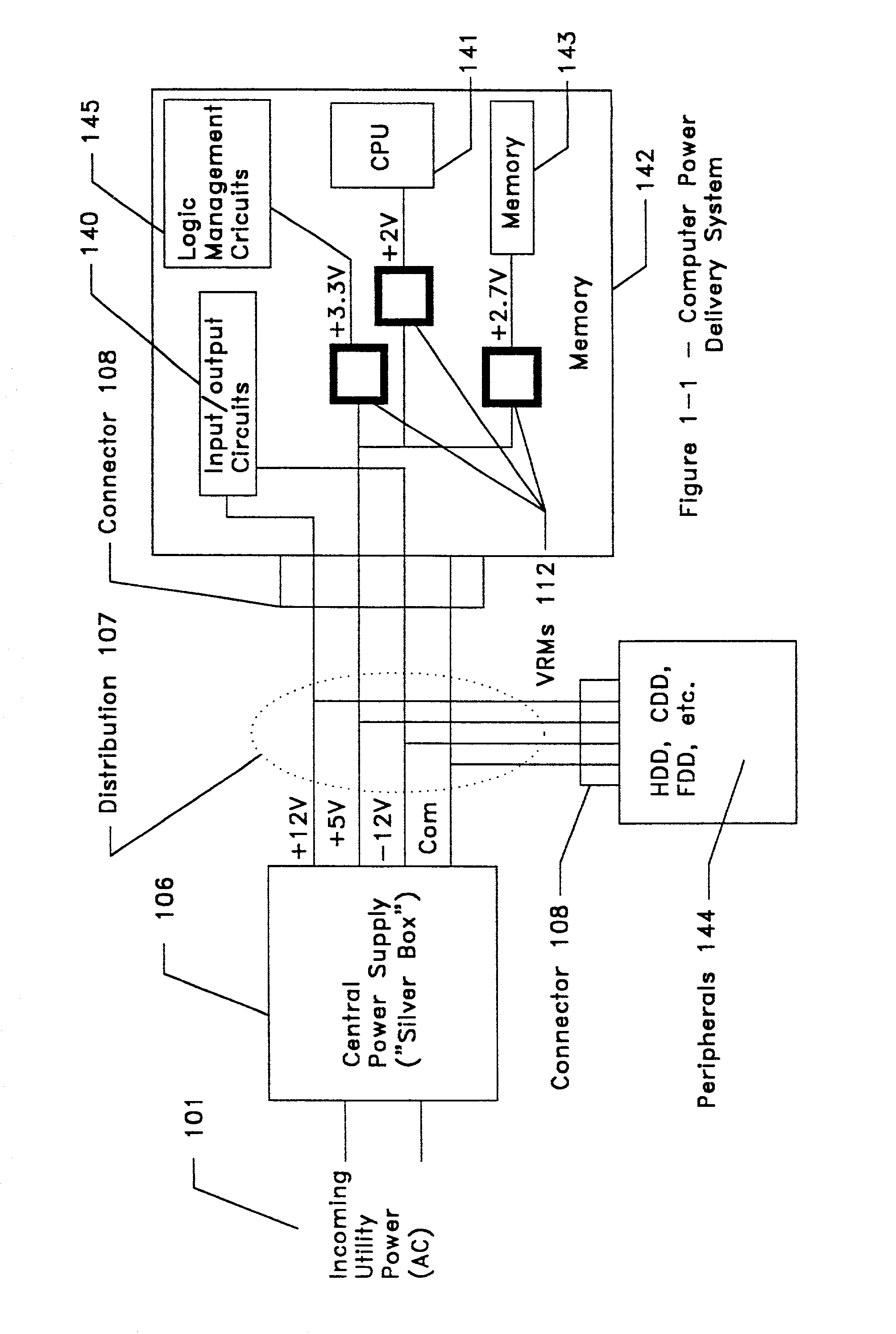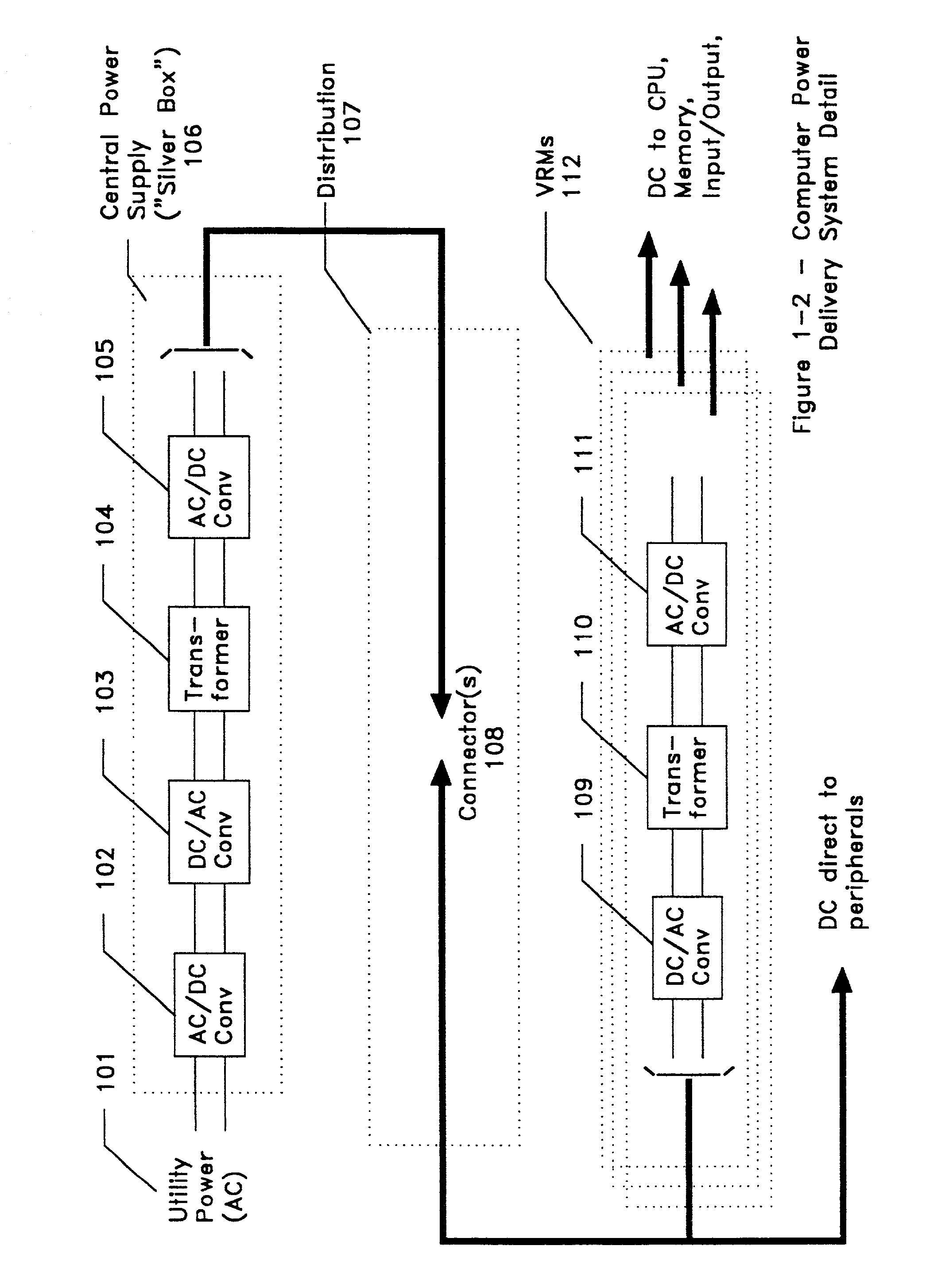Multiple element rectification circuit
a rectification circuit and multi-element technology, applied in the direction of liquid/fluent solid measurement, process and machine control, emergency power supply arrangement, etc., can solve the problem of increasing difficulty or impossible to locate such a large capacitor, the current is too large, and the switching frequency of 300 khz is inadequate, etc. problem, to achieve the effect of reducing the magnetic field, reducing the storage and powering medium, and reducing the stored energy
- Summary
- Abstract
- Description
- Claims
- Application Information
AI Technical Summary
Benefits of technology
Problems solved by technology
Method used
Image
Examples
examples
[0162]Choosing all the circuit parametric values can be a lengthy task. The following example is a general-purpose rectifier which may be optimized for powering a microprocessor operating at 1.8 volts and requiring 20 amperes. Using the circuit of FIG. 3-3 the following parametric values may be appropriate:
[0163]Frequency=3.3 MHZ
[0164]Turns ratio=5:1
[0165]Input voltage=30 VAC
[0166]LT=30 nH
[0167]CT=10 nF
[0168]Cin=2 nF
[0169]L1&L2=100 nH
[0170]Co=500 μF
[0171]SR1& SR2=3 ea. FDS6880
[0172]Conduction angle=266 degrees
[0173]Delay angle=24 degrees
[0174]FIG. 3-5 shows one embodiment of a SR gate drive; it consists of summation of sinusoidal signal derived from the AC input plus a control signal. Also, the signal derived from the AC input can have an optimal delay for high efficiency. This circuit can produce a clean AC voltage by taking advantage of the gate transformer leakage inductance and the gate capacitance to filter harmonics from the AC input. This circuit can also show the creation of...
PUM
 Login to View More
Login to View More Abstract
Description
Claims
Application Information
 Login to View More
Login to View More - R&D
- Intellectual Property
- Life Sciences
- Materials
- Tech Scout
- Unparalleled Data Quality
- Higher Quality Content
- 60% Fewer Hallucinations
Browse by: Latest US Patents, China's latest patents, Technical Efficacy Thesaurus, Application Domain, Technology Topic, Popular Technical Reports.
© 2025 PatSnap. All rights reserved.Legal|Privacy policy|Modern Slavery Act Transparency Statement|Sitemap|About US| Contact US: help@patsnap.com



